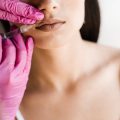Introduction to Aftercare in Aesthetic Treatments
When it comes to cosmetic procedures—whether it’s Botox, fillers, laser treatments, or chemical peels—what you do after leaving the clinic can be just as important as the treatment itself. In the United States, both practitioners and patients take aftercare seriously because proper post-treatment care can mean the difference between a smooth recovery and unwanted complications.
American aesthetic professionals generally provide detailed aftercare instructions tailored to each procedure. They expect patients to follow these guidelines closely to optimize results and minimize risks like infection, scarring, or uneven healing. Still, some people choose to handle their own aftercare at home, relying on online advice or personal experience instead of professional guidance.
Why Aftercare Matters
Aftercare is crucial for:
- Reducing side effects: Swelling, redness, and bruising are common after many treatments. Proper care helps manage these symptoms.
- Preventing complications: Infection or delayed healing can occur if wounds aren’t cared for correctly.
- Maximizing results: Good aftercare supports the best possible outcome from your cosmetic investment.
American Practitioner Expectations vs. DIY Approaches
| Professional Guidance | DIY Aftercare | |
|---|---|---|
| Instructions Provided | Personalized by licensed provider based on your procedure and health history | General tips found online or from friends; may not suit your specific needs |
| Monitoring Progress | Follow-up appointments; quick response if issues arise | No formal monitoring; self-assessment may miss early signs of problems |
| Trusted Products Used | Medically approved skincare and medications recommended | Over-the-counter or home remedies with unknown effectiveness or safety |
| Cultural Norms in the U.S. | Expectation to follow doctor’s orders; clinics often emphasize patient education and communication | Cultural trend toward self-sufficiency; some prioritize convenience over medical advice |
Understanding the importance of aftercare—and how American practitioners approach it—helps you decide whether to stick with expert advice or try a DIY route. Each choice has its own set of pros and cons, which we’ll explore further in this series.
2. Understanding DIY Aftercare
DIY aftercare refers to the process of taking care of your skin or body on your own after a medical aesthetic procedure, without direct supervision from a licensed professional. In the U.S., many people are drawn to DIY aftercare because it’s convenient, cost-effective, and fits into their busy lifestyles. With so much information available online, it’s easy to see why DIY options are appealing.
What Does DIY Aftercare Include?
Most Americans who try DIY aftercare use a combination of home remedies, over-the-counter products, and advice gathered from various sources. Here’s a quick overview:
| Source | Common Use | Pros | Cons |
|---|---|---|---|
| Social Media (Instagram, TikTok) | Tutorials and product recommendations | Quick tips, trending ideas | Misinformation risk, not personalized |
| Online Forums (Reddit, RealSelf) | Sharing experiences and asking questions | Community support, firsthand stories | No expert oversight, mixed advice quality |
| YouTube Videos | Step-by-step guides for aftercare routines | Visual learning, free content | Lack of regulation, may skip important details |
| Google Search & Blogs | General research on procedures and recovery tips | Easily accessible information | Difficult to verify accuracy or relevance |
| Over-the-Counter Products (CVS, Walgreens) | Cleansers, ointments, moisturizers | Easy to purchase, affordable options | No customization for specific needs or complications |
The Role of Online Communities in DIY Aftercare
Americans often turn to online communities to find answers quickly and connect with others who have undergone similar treatments. Platforms like Reddit or RealSelf allow users to post pictures of their progress and receive feedback from peers. While this can be helpful for emotional support, it’s important to remember that everyone’s healing journey is different—and what works for one person might not work for another.
The Influence of Social Media Trends
Platforms like TikTok and Instagram are full of influencers demonstrating their own aftercare routines or recommending certain products. These trends can spread rapidly across the country and influence what people try at home. However, social media rarely provides medical context or considers personal health factors.
A Word About Product Selection
When choosing products for at-home aftercare, most Americans rely on well-known pharmacy chains like CVS or Walgreens. They may pick up basic wound care supplies, gentle cleansers, and hydrating creams based on popular recommendations rather than professional advice. While this approach is budget-friendly and convenient, it doesn’t always address unique needs or unexpected reactions.
![]()
3. Professional Guidance: What Does It Involve?
When it comes to aftercare for cosmetic procedures, professional guidance is more than just a follow-up call. In the United States, medical professionals take aftercare seriously, providing step-by-step support to help you achieve the best results and reduce potential risks. Here’s what you can typically expect when you choose professional aftercare:
What Does Professional Aftercare Look Like?
- Follow-Up Appointments: After your procedure, your provider will schedule regular check-ins to monitor your healing and catch any issues early.
- Personalized Instructions: You’ll get clear, easy-to-follow directions on how to care for your skin or treated area based on your unique needs and procedure type.
- Medically-Approved Products: Only products and treatments backed by clinical research and FDA approval are recommended, ensuring safety and effectiveness.
- Access to Experts: If you have questions or concerns, you can reach out to licensed professionals instead of relying on online forums or guesswork.
Common Elements of Professional Aftercare
| Element | Description |
|---|---|
| Scheduled Check-Ups | Regular appointments to assess healing and progress |
| Customized Care Plans | Instructions tailored specifically for your procedure and skin type |
| Safe Product Recommendations | Use of clinically-tested, doctor-approved skincare and medications |
| Emergency Access | Direct line to your provider if complications arise |
| Documentation & Tracking | Your recovery is tracked in medical records for future reference |
The American Standard: Why It Matters
In the U.S., healthcare providers emphasize patient safety, transparency, and accountability. Choosing professional guidance means you’re not just another number—your provider is invested in your success. With ongoing support, expert advice, and medically sound recommendations, professional aftercare takes the guesswork out of recovery so you can focus on looking and feeling your best.
4. Benefits of DIY Aftercare
Many Americans appreciate the flexibility and control that comes with taking care of their own post-treatment needs. Let’s look at some key benefits of DIY aftercare for cosmetic procedures.
Convenience
One of the biggest reasons people choose DIY aftercare is convenience. You can manage your recovery on your own schedule without needing to arrange follow-up appointments or travel to a clinic. This is especially valuable for busy professionals, parents, or anyone juggling a hectic lifestyle.
Cost Savings
DIY aftercare often means spending less money. By following at-home instructions and using over-the-counter products, you can avoid extra fees for professional visits. For many Americans, this is an important factor in making aesthetic treatments more affordable.
Autonomy and Control
Taking charge of your own aftercare allows you to be more involved in your recovery process. Many people feel empowered by learning how to care for themselves and making decisions based on their own comfort and preferences.
Quick Comparison: DIY Aftercare Benefits
| Benefit | Why Americans Value It |
|---|---|
| Convenience | No need to visit clinics; fits into any schedule |
| Cost Savings | Lowers out-of-pocket expenses |
| Autonomy | Gives personal control over healing process |
Personalized Experience
DIY aftercare lets you tailor routines to fit your unique needs. Whether it’s choosing specific skincare products or adjusting activities during recovery, having options helps many people feel comfortable and confident in their healing journey.
5. Risks and Limitations of DIY Aftercare
Choosing to manage your own aftercare following a cosmetic procedure can seem convenient and cost-effective, but there are real risks and limitations that everyone should consider. While online resources and advice from friends may be easy to access, they cant replace the expertise of a trained professional. Here’s a breakdown of some common pitfalls you might face with DIY aftercare:
Potential Pitfalls of DIY Aftercare
| Risk | Description | Possible Outcome |
|---|---|---|
| Misunderstanding Instructions | Online tutorials or secondhand advice may be unclear or not specific to your treatment. | Poor healing, delayed results, or even damage to treated areas. |
| Increased Risk of Complications | Lack of medical knowledge means you might miss early signs of infection or allergic reactions. | Serious complications like infections, scarring, or worsening symptoms. |
| No Expert Assessment | Without professional follow-up, subtle issues can go unnoticed. | Undiagnosed problems, less optimal results, or longer recovery times. |
| Misinformation from Unverified Sources | Not all advice found online is accurate or safe for your unique situation. | Ineffective or harmful practices that can set back your healing process. |
| Lack of Personalized Guidance | DIY approaches often use generic instructions instead of tailored care plans. | Results that dont meet expectations due to one-size-fits-all recommendations. |
Why Professional Guidance Matters
A licensed medical professional doesn’t just provide instructions—they evaluate your unique needs, monitor your progress, and quickly address any concerns. This personalized support can make a big difference in the safety and success of your recovery. In the United States, it’s common for providers to offer follow-up appointments and even virtual check-ins to ensure everything is on track. Relying solely on DIY methods means missing out on this level of expert oversight.
6. Advantages of Professional Guidance
When it comes to aftercare following cosmetic treatments, many people wonder whether they should follow do-it-yourself methods at home or seek professional guidance. While DIY aftercare can seem convenient and affordable, there are significant benefits to having a licensed professional guide you through the healing process. Here’s why:
Personalized Care
Every person’s skin and body react differently to cosmetic procedures. A trained professional can assess your unique situation, monitor your healing, and adjust your aftercare plan as needed. This personalized approach helps address any specific concerns you might have, such as allergies, sensitive skin, or pre-existing medical conditions.
Benefits of Personalized Care:
| Aspect | DIY Aftercare | Professional Guidance |
|---|---|---|
| Advice Specificity | General tips from internet or friends | Tailored recommendations based on your needs |
| Adjustments for Complications | Hard to identify issues on your own | Expert monitoring and timely interventions |
| Product Recommendations | Trial and error with over-the-counter products | Medical-grade products suited for your skin type |
Reduced Risk of Complications
A big advantage of working with professionals is minimizing the risk of infection, scarring, or other complications. Licensed providers know how to spot early warning signs and can help you prevent minor issues from turning into bigger problems. They also give clear instructions on what to avoid during recovery, such as certain skincare ingredients or activities that may delay healing.
Common Complications Professionals Help Prevent:
- Infections due to improper wound care
- Delayed healing from using the wrong products
- Scarring from picking or scratching treated areas
- Pigmentation changes caused by sun exposure without protection
Accountability and Peace of Mind
When you receive guidance from a professional, there’s someone checking in on your progress and holding you accountable for following aftercare instructions. This not only gives peace of mind but also motivates you to stick to your routine. If you have questions or concerns, you can get reliable answers quickly instead of guessing or relying on online forums.
The Takeaway:
If you want the safest results and the best possible outcome from your treatment, seeking professional aftercare isn’t just about luxury—it’s about making sure your investment in yourself pays off with healthy, beautiful results.
7. Which Is Best for You? Key Considerations
Understanding Your Options
When it comes to aftercare following any aesthetic or cosmetic procedure, choosing between DIY (do-it-yourself) aftercare and professional guidance can feel overwhelming. Every person’s situation is unique, and the right choice depends on several personal factors. Here’s how you can make the best decision for yourself as an American patient.
Key Factors to Consider
| Factor | DIY Aftercare | Professional Guidance |
|---|---|---|
| Procedure Complexity | Simple treatments like facials or chemical peels may be manageable at home with proper instructions. | More complex procedures (like laser resurfacing or injectables) usually require expert follow-up and care. |
| Your Comfort Level | If you’re confident in following instructions, DIY might be suitable for basic care. | If you feel anxious or unsure, professional advice offers reassurance and tailored recommendations. |
| Budget | DIY is usually more affordable, but mistakes can lead to higher costs if complications arise. | Professional services cost more upfront but may prevent expensive issues down the road. |
| Time and Convenience | You control your schedule with DIY, making it flexible for busy lifestyles. | Appointments require planning, but you benefit from expert eyes on your healing process. |
| Risk of Complications | Without medical oversight, you might miss early signs of infection or adverse reactions. | Professionals can catch problems early and intervene quickly if needed. |
Ask Yourself These Questions:
- What type of procedure did I have? If it’s minimally invasive, DIY could work. More invasive treatments usually need professional follow-up.
- Do I have access to trustworthy information? Reliable aftercare starts with clear instructions from your provider—don’t just rely on internet tips.
- Am I comfortable managing potential side effects? Swelling, redness, or discomfort are common. If you’re uneasy about handling these on your own, consider professional help.
- How important is a speedy recovery? Professional guidance may speed up healing and ensure better results for some procedures.
- Is my provider easy to reach? Some clinics offer virtual check-ins, blending convenience with expert care—a great middle ground!
The American Approach: Practical Tips
- Mention your preferences during your consultation: Be honest about your comfort level and lifestyle when discussing aftercare plans with your provider.
- Create a checklist: Whether you go DIY or professional, keep track of all recommended steps and products to avoid missing anything important.
- Stay connected: Even if you choose DIY aftercare, most U.S. clinics encourage reaching out via phone or email if you have questions or concerns. Don’t hesitate to ask!
- Avoid “one-size-fits-all” solutions: What works for a friend may not be right for you—always personalize your care plan based on your needs and procedure type.
The bottom line? Making the right choice between DIY aftercare and professional guidance means considering your procedure, budget, comfort level, and available resources. Talk openly with your provider so you can heal safely and confidently—no matter which route you choose.


